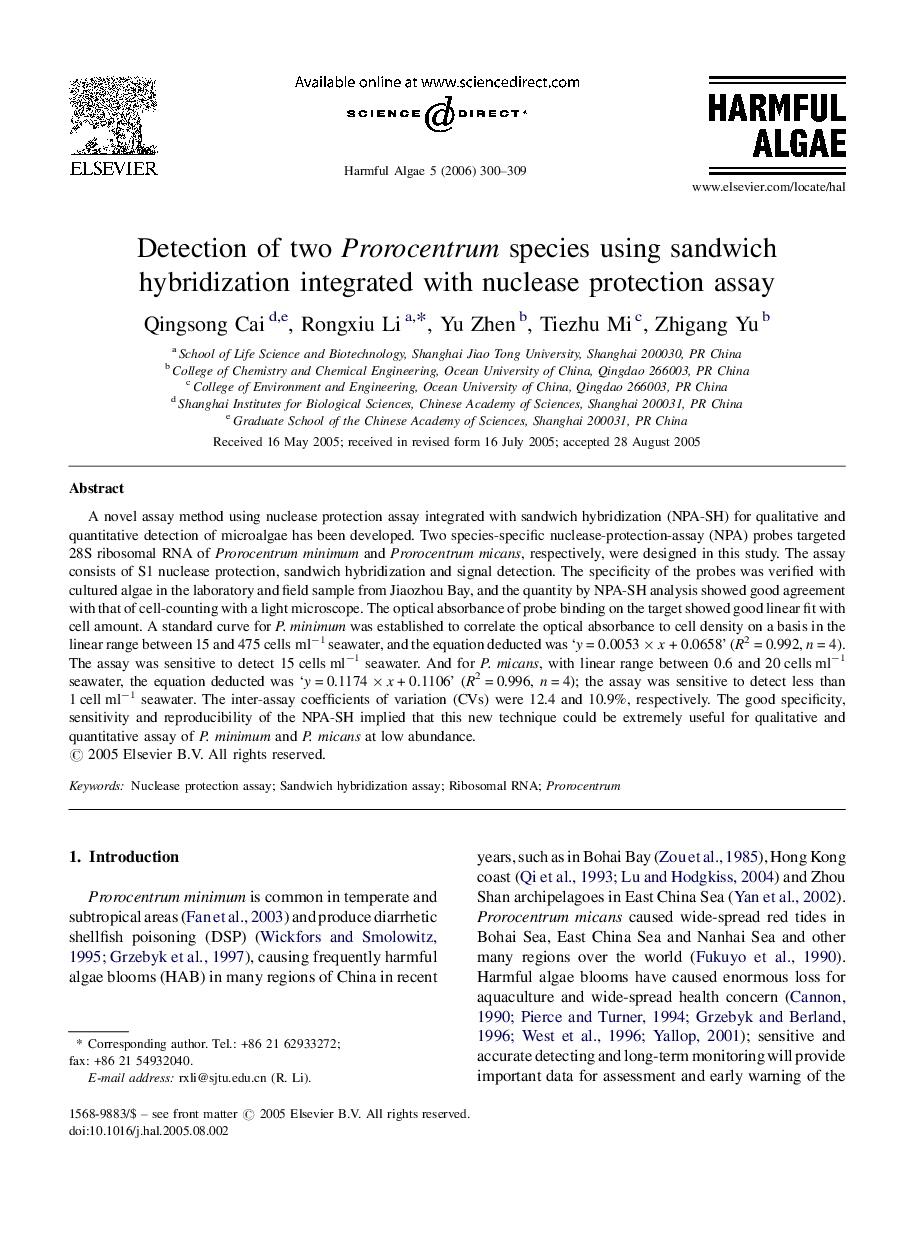| Article ID | Journal | Published Year | Pages | File Type |
|---|---|---|---|---|
| 4546313 | Harmful Algae | 2006 | 10 Pages |
A novel assay method using nuclease protection assay integrated with sandwich hybridization (NPA-SH) for qualitative and quantitative detection of microalgae has been developed. Two species-specific nuclease-protection-assay (NPA) probes targeted 28S ribosomal RNA of Prorocentrum minimum and Prorocentrum micans, respectively, were designed in this study. The assay consists of S1 nuclease protection, sandwich hybridization and signal detection. The specificity of the probes was verified with cultured algae in the laboratory and field sample from Jiaozhou Bay, and the quantity by NPA-SH analysis showed good agreement with that of cell-counting with a light microscope. The optical absorbance of probe binding on the target showed good linear fit with cell amount. A standard curve for P. minimum was established to correlate the optical absorbance to cell density on a basis in the linear range between 15 and 475 cells ml−1 seawater, and the equation deducted was ‘y = 0.0053 × x + 0.0658’ (R2 = 0.992, n = 4). The assay was sensitive to detect 15 cells ml−1 seawater. And for P. micans, with linear range between 0.6 and 20 cells ml−1 seawater, the equation deducted was ‘y = 0.1174 × x + 0.1106’ (R2 = 0.996, n = 4); the assay was sensitive to detect less than 1 cell ml−1 seawater. The inter-assay coefficients of variation (CVs) were 12.4 and 10.9%, respectively. The good specificity, sensitivity and reproducibility of the NPA-SH implied that this new technique could be extremely useful for qualitative and quantitative assay of P. minimum and P. micans at low abundance.
